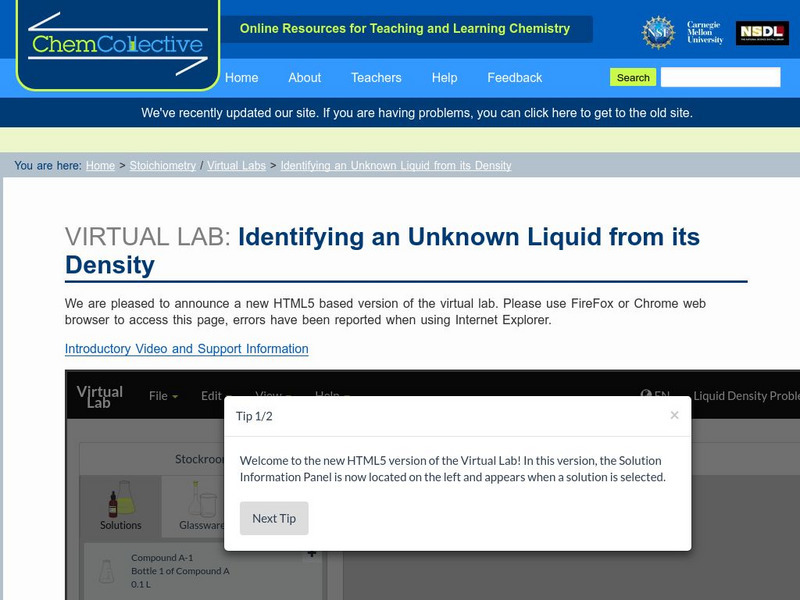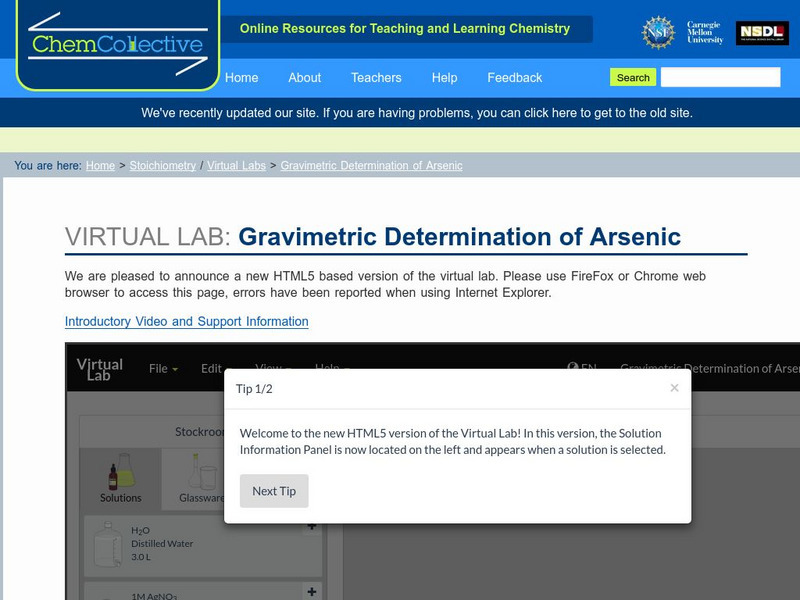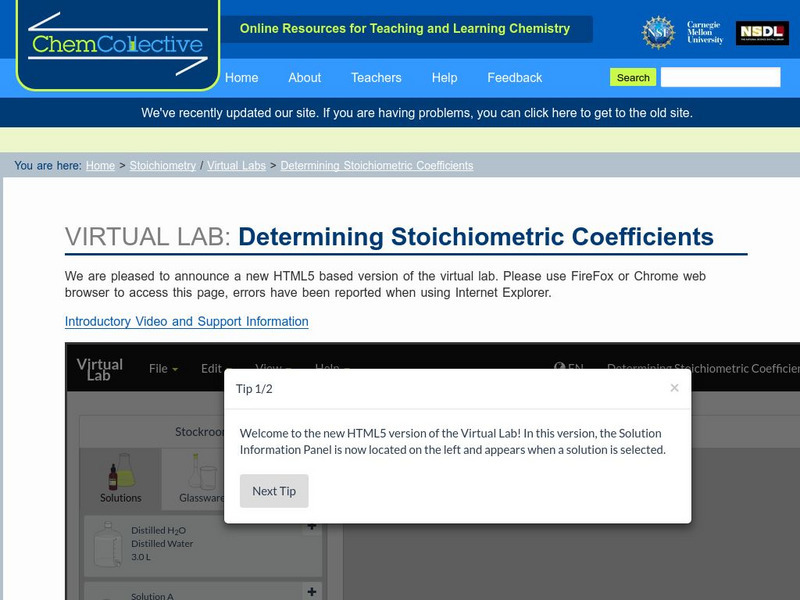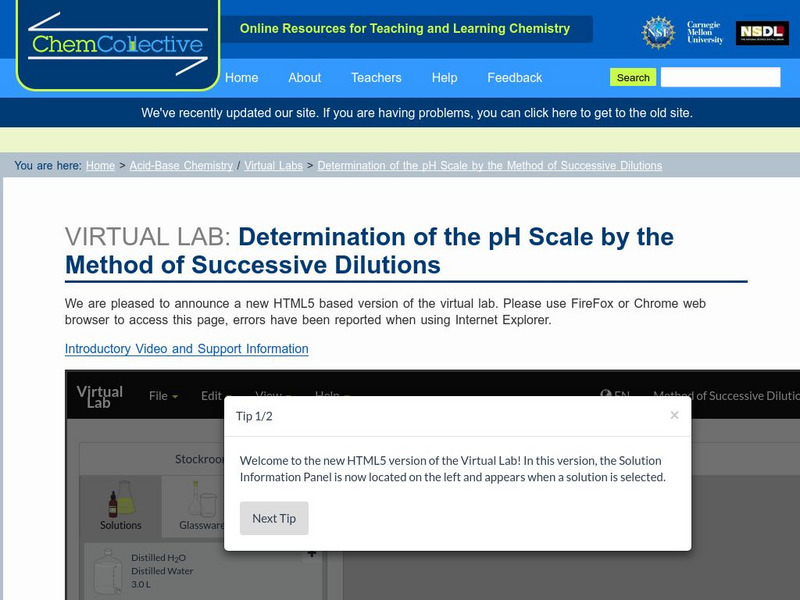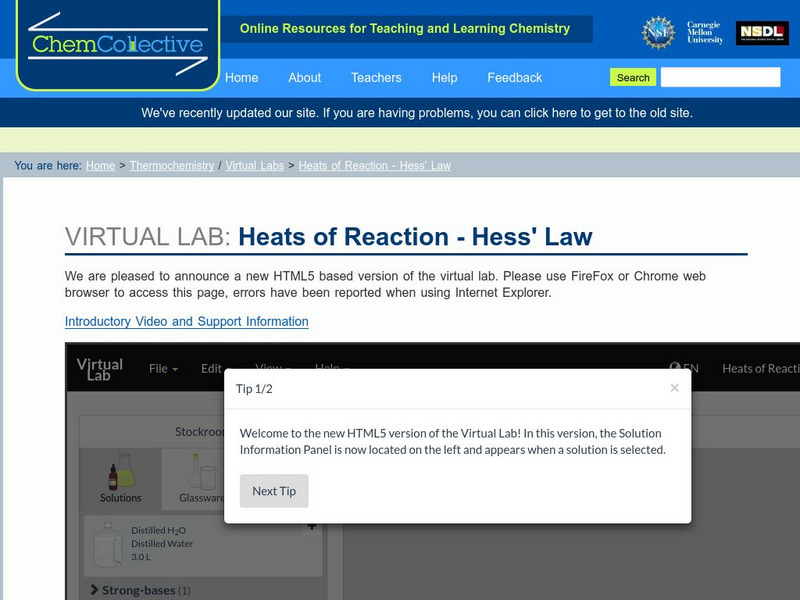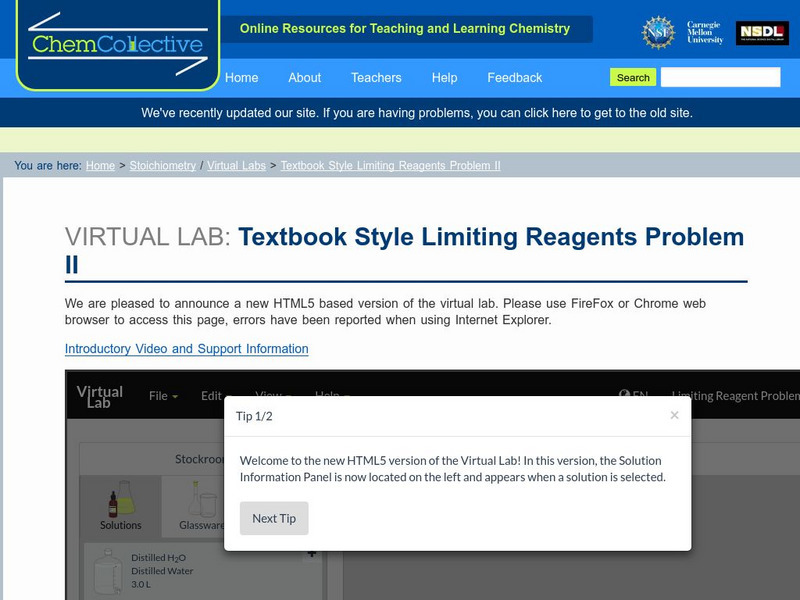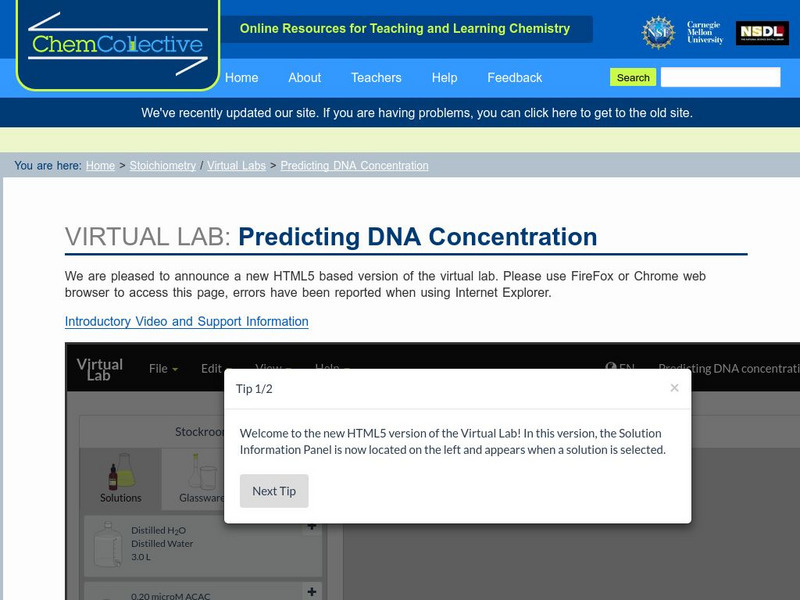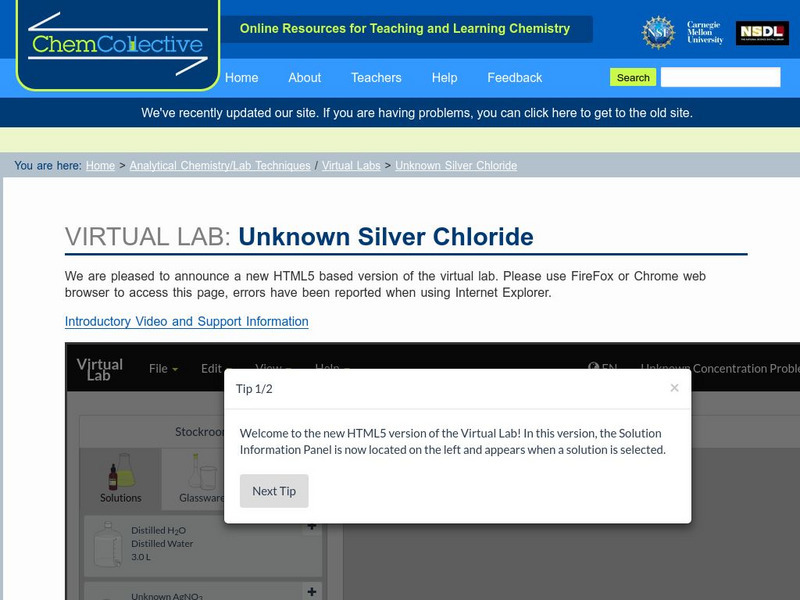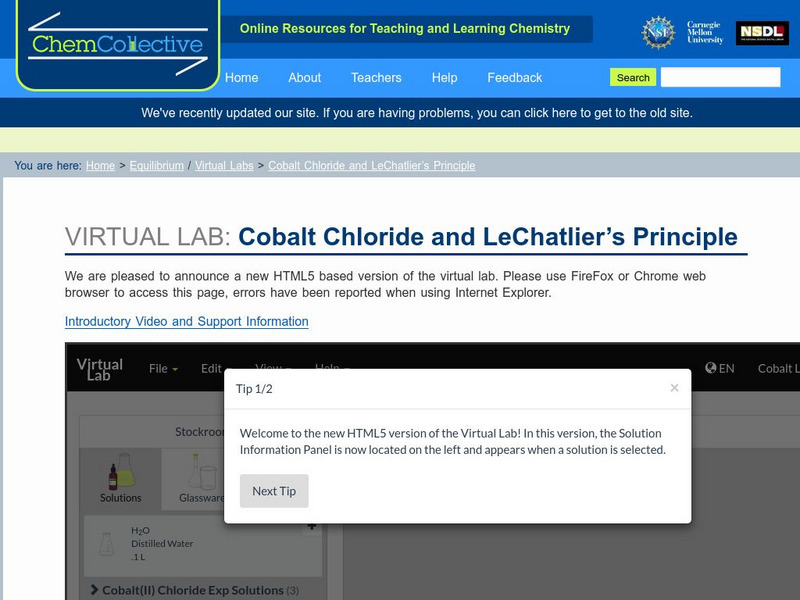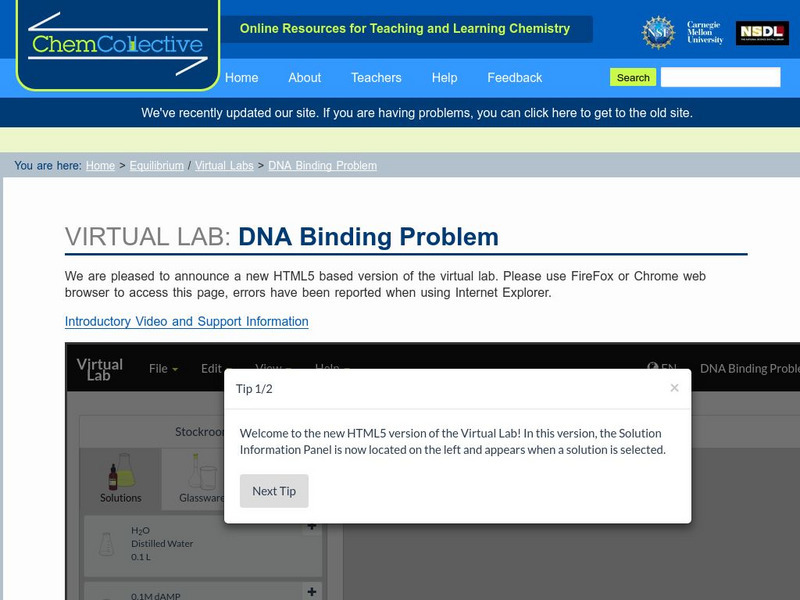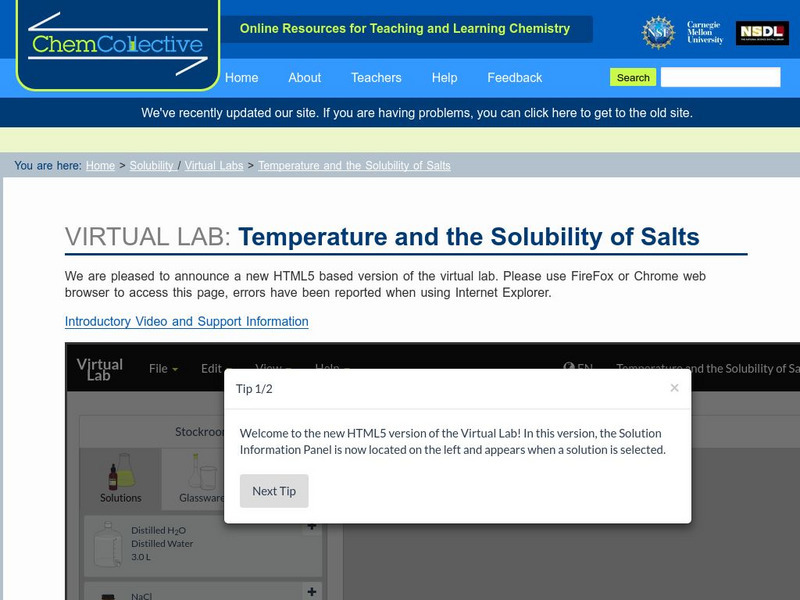Chemistry Collective
Chem Collective: Identifying the Unknown Metal
In this activity, students use the virtual lab to identify an unknown metal by measuring its density and comparing their measurements to the densities of known metals.
Chemistry Collective
Chem Collective: Identifying an Unknown Liquid From Its Density
In this activity, students use the virtual lab to design an experiment to determine the identity of mislabeled bottles using the densities of the solutions inside.
Chemistry Collective
Chem Collective: Gravimetric Determination of Arsenic
Set in the context of ground water contamination in Bangladesh, this stoichiometry and analytical chemistry activity examines the issues around identifying wells contaminated with arsenic. In this activity, students perform a gravimetric...
Chemistry Collective
Chem Collective: Alcohol Density Problem
Determine the concentration of an alcohol solution from its density.
Chemistry Collective
Chem Collective: Determining Stoichiometric Coefficients
In this activity, students use the virtual lab to determine how four unknown substances react with each other including their stoichiometric coefficients.
Chemistry Collective
Chem Collective: Textbook Style Limiting Reagents Problems
Textbook-style practice limiting reagent exercises with that can be used as a way to "predict and check" your answers using the virtual lab.
Chemistry Collective
Chem Collective: Determination of the P H Scale
This virtual lab activity where students perform the method of successive dilutions using HCl, NaOH, a pH meter, and universal indicator solution to help understand the logarithmic nature of the pH scale.
Chemistry Collective
Chem Collective: Standardization of Na Oh With a Khp Solution: Acid Base Titration
Use the Virtual Laboratory to standardize an unknown NaOH solution (approximately 0.2M) to four significant figures via titration with 25.00 mL of a KHP standard solution.
Chemistry Collective
Chem Collective: Determining the P Ka and Concentration Ratio
Use the virtual lab to determine the pKa of a protein then create a buffer solution with a specific concentration ratio of the protein in its protonated/ unprotonated form.
Chemistry Collective
Chem Collective: Creating a Buffer Solution
An exercise to design a buffer solution with specific properties.
Chemistry Collective
Chem Collective: Dna Dye Binding: Equilibrium and Buffer Solutions
Students examine equilibrium and buffer solutions in a biological setting.
Chemistry Collective
Chem Collective: Exploring Oxidation Reduction Reactions
Design an experiment to order Cu, Mg, Zn and Pb from strongest to weakest reducing agent.
Chemistry Collective
Chem Collective: Heats of Reaction: Hess's Law
This activity provides a demonstration of Hess's Law using three reactions: the solubility NaOH in water, the solubility NaOH in HCl, and the reaction of a solution of HCl and a solution of NaOH.
Chemistry Collective
Chem Collective: Stoichiometry and Solution Preparation Problem
In this limiting reagents problem, students mix together solutions in different ratios in an attempt to produce a final solution that contains only 1 product.
Chemistry Collective
Chem Collective: Textbook Style Limiting Reagents Problem Ii
In this activity, students practice with experiments involving limiting reagents and the test their knowledge to determine the concentration of an unknown solution.
Chemistry Collective
Chem Collective: Predicting Dna Concentration
In this limiting reagents problem, students are given specific concentrations of DNA solutions and are asked to predict what products and reactants will remain after a specific volumes are mixed and reaction has occurred.
Chemistry Collective
Chem Collective: Unknown Concentration of Dna Solution Problem
In this advanced limiting reagent problem, students use the virtual lab to determine the concentration of a solution of DNA by reacting it with known amounts of a fluorescent dye which binds to the DNA.
Chemistry Collective
Chem Collective: Unknown Silver Chloride
Determine the concentration of silver ion in a Silver Nitrate solution using gravimetric analysis.
Chemistry Collective
Chem Collective: Cobalt Chloride and Le Chatlier's Principle
In this activity, students safely explore the equilibrium reaction of the cobalt chloride reaction.
Chemistry Collective
Chem Collective: Dna Binding Problem
In this activity, students explore equilibrium constants in biochemical systems by measuring the binding constant of a DNA-Dye reaction.
Chemistry Collective
Chem Collective: Temperature and the Solubility of Salts
Examine the solubilities of salts based on temperature.
Chemistry Collective
Chem Collective: Determining the Solubility Product
Determine the solubility product constatnt (Ksp) for various solids with this virtual lab.
Chemistry Collective
Chem Collective: Determining the Solubility of Copper Chloride
Given the solubility of CuCl at two different temperatures, predict its solubility at a third temperature. Then test your prediction by creating the solution in the virtual lab.
Chemistry Collective
Chem Collective: Determining the Heat of Reaction in Aqueous Solution
In this activity, students perform an experiment to determine the heat of a reaction.



